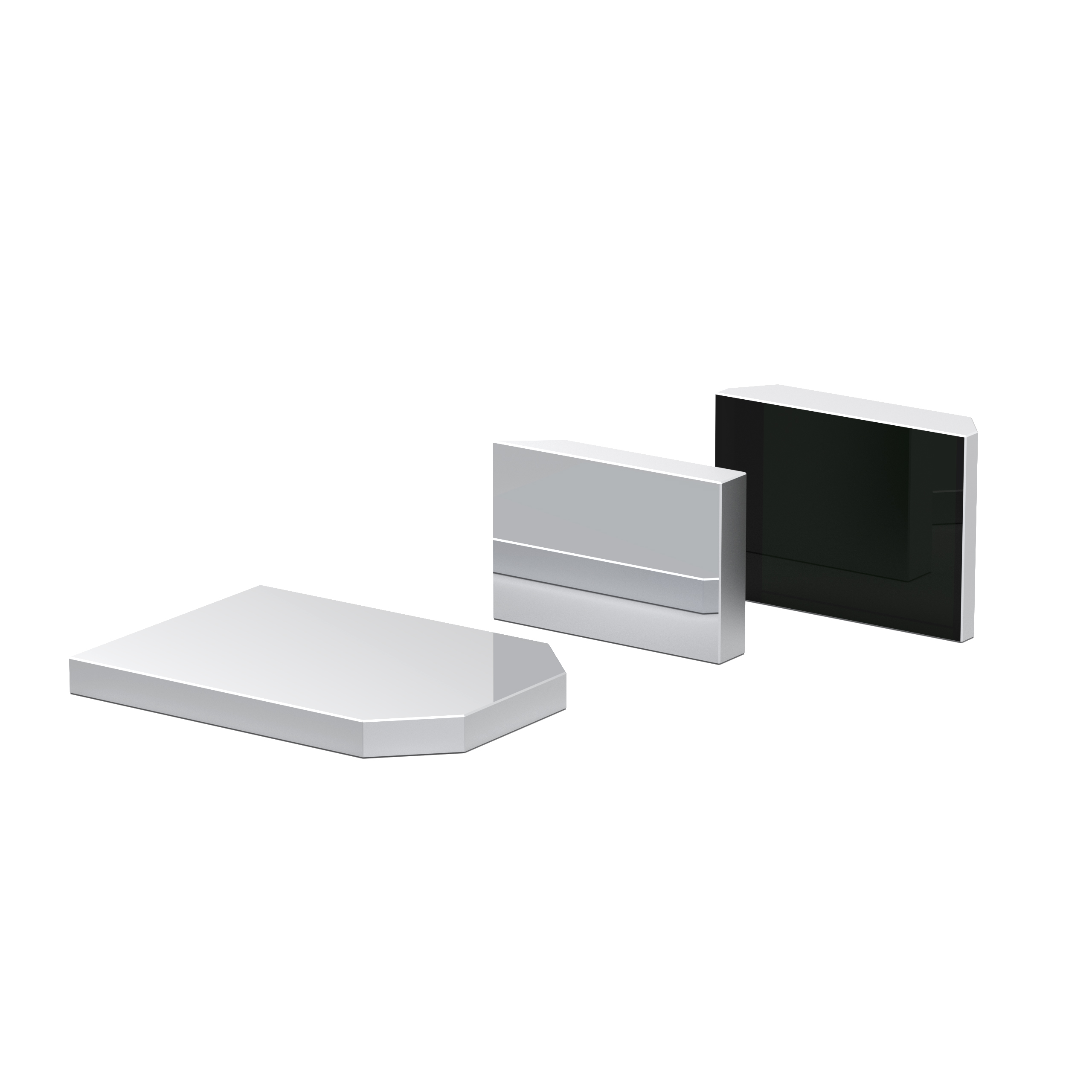close
Choose Your Site
Global
Social Media




| Availability: | |
|---|---|
Non-Polarizing Beamsplitters (NPBS) are optical components designed to divide an incoming light beam into two approximately equal parts—one reflected and one transmitted—without altering the polarization state of the light. Unlike polarization-sensitive beam splitters, NPBS devices maintain consistent performance across all polarization states, making them ideal for applications where polarization independence is critical. Constructed from high-quality BK7 glass or fused silica substrates, these beam splitters feature dielectric or metallic coatings on the hypotenuse face of a cube or the surface of a plate. The coatings are engineered to achieve precise reflectance-transmittance ratios (e.g., 50/50, 30/70) across specific wavelength ranges, ensuring minimal absorption loss and high optical efficiency .

Product: Non-Polarizing Beamsplitters
Material: Fused Silica/BK7
Clear Aperture: >90%
Diameter Tolerance: +/-0.1mm
Bevel: Break sharp edges
Flatness (PV): <1/10L@633nm
Surface Quality: 10-5
Ratios: 50/50, 30/70
Thickness Tolerance: +/-0.1mm
NPBS devices ensure equal splitting of S and P polarization components, maintaining consistent performance regardless of the input light’s polarization state. This is achieved through advanced coating designs that balance reflectance and transmittance for both polarizations .
Coatings are optimized for specific wavelength ranges (e.g., visible, NIR) and splitting ratios. For example, a 50/50 NPBS cube may achieve ±5% tolerance in reflectance-transmittance balance across its operational bandwidth .
Dielectric coatings minimize energy loss, with absorption typically below 1%. Metallic coatings, while less common, offer broader spectral coverage but slightly higher absorption .
Cemented cube designs provide mechanical stability, while anti-reflective (AR) coatings on entrance and exit surfaces reduce ghosting and enhance transmission efficiency .
Available in cube, plate, or wedge designs, NPBS devices can be tailored to specific applications, including high-power laser systems, imaging, and interferometry .
Optical Interferometry
NPBS devices are critical in Michelson interferometers for splitting light into reference and sample arms, enabling precise measurements of wavelength, distance, or refractive index changes .
Laser Beam Manipulation
Used in laser systems to split beams for multi-path experiments, power monitoring, or creating parallel optical channels. For example, in material processing, NPBS cubes can divide a laser beam to simultaneously inspect and modify a workpiece .
Imaging Systems
In microscopy and spectroscopy, NPBS devices enable dual-channel imaging by directing light to both a camera and a spectrometer. This is particularly useful in fluorescence microscopy, where excitation and emission wavelengths are separated .
Quantum Optics
NPBS cubes are essential in quantum entanglement experiments, where maintaining polarization independence is crucial for preserving quantum states .
Industrial Metrology
Employed in laser-based measurement systems for tasks like surface profilometry and defect detection, ensuring accurate and consistent results across varying light conditions .
Q: How does a non-polarizing beamsplitter differ from a polarizing one?
A: Non-Polarizing Beamsplitters devices treat S and P polarization equally, while polarizing beam splitters separate light into orthogonal polarization states. NPBS is preferred when polarization must remain unchanged, whereas polarizing splitters are used for polarization analysis or manipulation .
Q: Can Non-Polarizing Beamsplitters devices handle high-power lasers?
A: Yes, but it depends on the coating type. Dielectric-coated Non-Polarizing Beamsplitters cubes are suitable for moderate power, while metallic coatings can handle higher power but with slightly reduced efficiency. Always check the laser damage threshold (LIDT) for high-power applications .
Q: What is the typical wavelength range for NPBS devices?
A: Non-Polarizing Beamsplitters devices are available for UV (200–400 nm), visible (400–700 nm), and NIR (700–2000 nm) ranges. Custom designs can extend this range further .
Q: How do I choose between a cube and a plate beamsplitter?
A: Cube beamsplitters offer better mechanical stability and alignment ease, while plate beamsplitters are thinner and more cost-effective. Cube designs are preferred for precision applications, while plates are suitable for space-constrained setups .
Engineering Expertise
Our Non-Polarizing Beamsplitters devices are designed using advanced optical modeling software to ensure precise splitting ratios and minimal polarization dependence. We offer custom coatings for unique wavelength ranges and splitting requirements .
Quality Assurance
All products undergo rigorous testing for surface quality (e.g., 60/40 scratch-dig standard), flatness (λ/4 per 25 mm), and coating durability. Our ISO 9001-certified processes ensure consistent performance .
Fast Turnaround
With in-house coating facilities and automated production lines, we deliver standard NPBS devices within 2–4 weeks and custom orders in 6–8 weeks, supported by global logistics networks .
Competitive Pricing
Our economies of scale and vertical integration allow us to offer high-performance Non-Polarizing Beamsplitters devices at competitive prices without compromising quality .
Technical Support
Our team of optical engineers provides pre-sales consultation and post-purchase troubleshooting, ensuring seamless integration into your optical system .